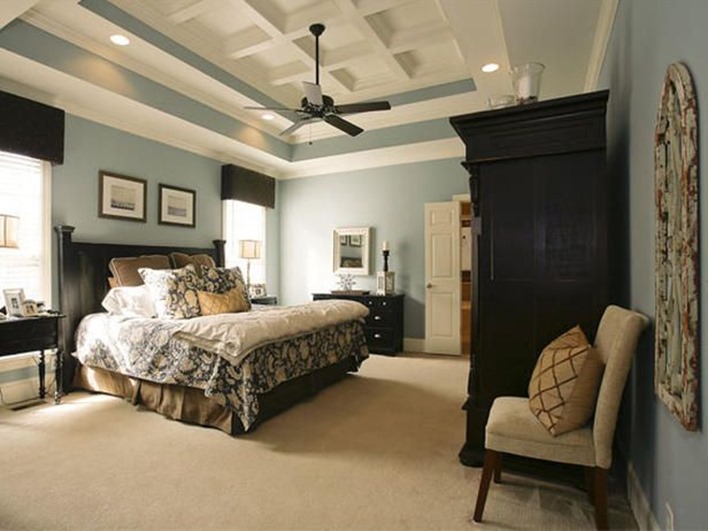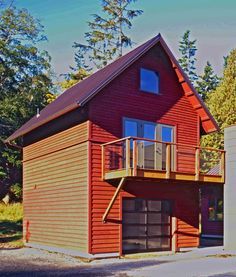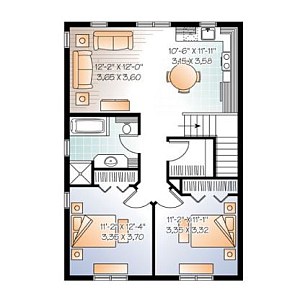
There are many sizes of garage doors. Some can be as small and narrow as a few inches. Others can be several feet tall. They can be used for residential, commercial and industrial use. If you are building a new home, or renovating your existing one, it's a good idea to measure the size of the garage and decide which door best suits your needs.
Standard Measurements for Garage Doors
For most homes, the standard size of a garage door is 9 feet x 7 feet for a single or double garage door. It measures 16 ft x 7 ft. This is a great size for most vehicles and will fit many people's needs.
When considering the size of your garage door, it's important to consider what type of vehicle you want to park inside. A taller garage door may be better if you have a large SUV. You might also consider a double garage entrance if you have multiple cars and need to store them side by side.

An RV will require a larger garage door. A 20-foot garage door might be the best option. It is important to measure the space in your garage to determine how big you can store an RV.
Garage Door 10 ft
A 10-foot garagedoor might be the best choice for a garage that is smaller than your garage and allows you to park a few small vehicles. They are slightly narrower than 12-foot garage doors so it's easier to get into the garage with your cars.
Garage Door 8ft
An 8-foot garage door is a good choice if you have a few smaller cars to park in your garage. These are available in a variety of colors and styles, including wood grain finishes.
Garage Door 12 ft
A 12-foot door would be the ideal choice for a garage with more square footage. They can usually be purchased in a range colors and finishes at your local hardware shop.

Garage Door 18ft
A typical 18-foot garage doors will work well for most people and is often the most requested. Because it has enough space for most cars, and can be opened to full height if necessary to park a bike or small trailer, this garage door is very popular.
A designer or architect can help you decide which garage door is best for your home. A designer or architect can help you decide if the size of the garage door will be sufficient. They may also recommend other door styles that would work best in your space. They can also help you choose the right materials for your garage.
FAQ
What is the average time it takes to remodel a bathroom.
A bathroom remodel typically takes around two weeks. The size of your project will affect the time taken to remodel a bathroom. Some jobs, such installing a vanity and adding a shower stall, can take only a couple of days. Larger projects like removing walls and installing tile floors or plumbing fixtures can take many days.
A good rule of thumb is to allow three days per room. So if you have four bathrooms, you'd need 12 days total.
Why remodel my house when I could buy a new home?
Although houses are getting cheaper each year, you still have to pay the same amount for the same square footage. Even though you may get a lot of bang for your buck, you also pay a lot for that extra square footage.
A house that isn't in constant maintenance costs less.
You can save thousands by remodeling your existing home rather than buying a completely new one.
By remodeling your current home, you can create a unique space that suits your lifestyle. Your home can be made more comfortable for your family.
Is $30000 enough for a kitchen remodel?
A kitchen remodel costs anywhere from $15000 up to $35000 depending on what you are looking for. You can expect to spend more than $20,000. If you are looking for a complete overhaul of your kitchen, it will cost more. However, if you want to update appliances, replace countertops, or add lighting and paint, you could do it for under $3000.
Full-scale renovations typically cost between $12,000 and $25,000. But there are ways to save money without compromising quality. For example, you can install a new sink instead of replacing an old one, which costs approximately $1000. You can even buy used appliances for half of the price of new.
Kitchen renovations can take longer than other types projects so plan ahead. It doesn't make sense to start work on your kitchen when you realize half way through that time is running out.
The best thing is to get going early. Begin to look at your options and get quotes from several contractors. Then narrow down your choices based on price, quality, and availability.
After you have found potential contractors, get estimates and compare prices. Not always the best choice is the lowest-priced bid. It is important that you find someone with comparable work experience to provide an estimate.
Be sure to take into account all additional costs when you calculate the final cost. These may include labor or material charges, permits and so forth. You should be realistic about what you can spend and stick to your spending budget.
If you're unhappy with any of the bids, be honest. Tell the contractor why you don't like the initial quote and offer another chance. Saving money is not a matter of pride.
What should my cabinets look like?
It all depends on if you are thinking of selling or renting your home. You'll need to remove the cabinets and refinish them if you plan to sell. This gives buyers the impression that they're brand new and helps them envision their kitchens after moving in.
The cabinets should be left alone if you intend to rent your home. Many tenants complain about cleaning up after their previous tenants, including greasy fingerprints and dirty dishes.
You can also consider painting the cabinets to make them look newer. It is important to use a high quality primer and paint. Low-quality paints are susceptible to fading over time.
How much would it be to renovate a house vs. what it would cost you to build one from scratch?
A home gutting involves the removal of all interior items, including walls, floors ceilings, plumbing and electrical wiring, fixtures, appliances, and fixtures. It's usually done when you're moving into a new place and want to make some changes before you move in. Due to so many factors involved in the process of gutting a property, it can be very costly. Depending on the job, the average cost of gutting a home is between $10,000 and $20,000
A builder builds a house by building it frame by frame. Then, he adds walls and flooring, roofing, windows and doors. This usually happens after you have purchased lots of lands. Building a home is normally much less expensive than gutting, costing around $15,000-$30,000.
It all comes down to what you want to do in the space. If you are looking to renovate a home, it will likely cost you more as you will be starting from scratch. But if your goal is to build a house, you won't need to disassemble everything and redo everything. You can build it as you wish, instead of waiting to have someone else tear it apart.
How can you tell if your house needs renovations or a remodel?
First, consider whether your home has been updated in recent times. A renovation may be a good idea if there have been no updates for several years. On the other hand, if your home looks brand-new, then you may want to think about a remodel.
Second, make sure to inspect the state of your home. It's possible to renovate your home if there are holes in the walls, peeling wallpaper or damaged tiles. A remodel is not necessary if your home appears to be in great condition.
A second factor to consider is your home's general condition. Are the structural integrity and aesthetics of your home? Do the rooms look nice? Are the floors spotless? These questions are critical when deciding what type of renovation you should do.
Statistics
- According to a survey of renovations in the top 50 U.S. metro cities by Houzz, people spend $15,000 on average per renovation project. (rocketmortgage.com)
- Windows 3 – 4% Patio or backyard 2 – 5% (rocketmortgage.com)
- 55%Universal average cost: $38,813Additional home value: $22,475Return on investment: 58%Mid-range average cost: $24,424Additional home value: $14,671Return on investment: (rocketmortgage.com)
- About 33 percent of people report renovating their primary bedroom to increase livability and overall function. (rocketmortgage.com)
- 5%Roof2 – 4%Standard Bedroom1 – 3% (rocketmortgage.com)
External Links
How To
How do you plan a bathroom on a budget?
It is important to be able to afford any remodeling project. How can you expect to pay for it later if you cannot afford it now?
You need to be able to budget and plan for bathroom remodeling. Bathroom remodeling can be very expensive. There are many factors that influence the cost.
Labor is one of the largest expenses. Costs for labor depend on the size of your job and whether or not you hire a professional. Professional contractors are usually more expensive than DIYers because they have the experience and expertise.
Materials are another significant expense. Prices for materials can range from $100 to $1000 depending on what type you use.
The cost of energy is also an important factor. This includes both electricity and gasoline bills. Peak demand will cause energy prices to rise.
The time taken to complete the project is another factor to consider. Bathroom renovations require patience and a lot of time. Some projects can take weeks, while others can take many months.
Beyond these three categories, there are many smaller items, such as paint, wallpaper or flooring, that add to the overall cost of the project.
To help you determine the best way to approach your bathroom remodeling project, here are some tips to keep in mind:
-
Determine your Budget - Before you begin any remodeling project, it is important to determine what you can afford. It doesn't really matter if it is something you can afford. It is important to establish a realistic budget so that you can see where your finances are at all times.
-
Plan ahead - When possible, schedule your bathroom remodel during the off-season. Winter months are known for having lower energy consumption, so you can save on cooling and heating costs. It is possible to schedule your remodel at night, when the majority of people use the bathroom.
-
Look around - After you have established your budget, it is time to start looking for vendors. You have many options, including local shops, online retailers and even family members who are willing to collaborate on your project.
-
Contact Each Vendor Individually to Get an Estimate It is important to get multiple quotes in order to receive the most competitive pricing.
-
Get multiple estimates - Once you have received your initial estimates, compare them to find the best price. After you have selected the vendor, ask them for a written estimate.
-
Include All Costs in Your Estimate - You need to include all expenses you intend to spend on your project. Be specific about permits, taxes, fees, etc., that may apply to your area.
-
Do not overlook the small details - When planning your bathroom remodel, it is important to pay attention to the smallest details. Do you really need a new toilet? Is there sufficient space to mount a shower curtain rod on the wall? These modifications can easily increase your project's cost.
-
Consider Insurance - The scope of your bathroom remodeling project will impact the insurance you have. You could end up paying more if you don't.
-
Hire a Professional - Once your bathroom remodel is complete, you should always hire a professional to put in the final fixtures. While you might be able to handle the job yourself, it is much easier to let someone else do it properly.